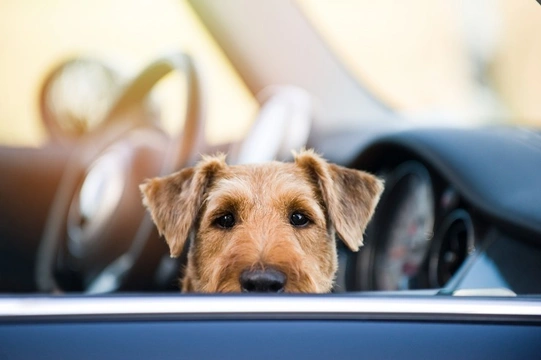
Why are hot cars such a risk to dogs in the summer?
Every year, a number of dogs die during the hot summer months due to being left in a hot car, despite a significant amount of publicity and campaigning on the part of dog charities and welfare organisations to raise awareness of the issue.
Nobody who leaves their dog in the car in the summer deliberately does this in order to cause harm, and many dog owners still think that there are some get-out clauses or caveats that can minimise the risk-such as by leaving a window open, or providing water. However, there really is no safe way to leave a dog alone in the car during hot weather for any length of time, and heatstroke can develop and become dangerously acute within just a few minutes, something that again, not all dog owners are aware of.
While every dog owner will no doubt have heard and read campaigns designed to teach people about the risks of a hot car, understanding why such a situation is a problem and the specific issues that it causes is important in order to know why hot cars are such a danger, and why the risk cannot be mitigated.
In this article, we will look at precisely why being left in a car is such a risk to dogs in the summer, and the effect that this has on the dog’s body and their natural cooling mechanisms. Understanding this helps dog owners to understand why there are no loopholes in terms of leaving a dog in a car and so, hopefully prevent potentially dangerous situations caused by a lack of understanding. Read on to learn more.
How dogs stay cool
In order to understand why a hot car is such a risk to dogs, it is important to first understand the basics of how dogs stay cool, and this is very different to the way that people do.
Dogs only sweat a very small amount, and only from their noses and the pads of their paws-and this is not enough to keep them cool. Dogs cope with hotter weather by drinking more fluids, which helps to lower their core temperature, and also by avoiding exertion and actively seeking out shady and cooler areas.
However, the most efficient way in which dogs stay cool or cool down is by panting, which is why dogs pant a lot in the summer and when exercising. The inside of the dog’s mouth and of course, their tongues, are constructed of a large surface area of mucous membranes, which are very sensitive to temperature. Hot air is expelled from the body when the dog exhales, and they then inhale the cooler air from the environment around them, in a continual cycle that allows for a large-scale exchange of air and that should, in combination with staying quiet in the shade and drinking water, be enough to keep most dogs cool.
However, all of this depends on the dog being able to drink freely, seek out cooler spaces, and breathe fresh air continually-and for some dogs that are overweight or brachycephalic like the English bulldog, even this may not be enough.
The interior of a car
Understanding how the environment of the interior of a car directly works against all of the dog’s natural cooling methods is the next step to appreciating the risks, and virtually everything about such an environment is contradictory to what a dog needs to maintain their own temperature.
First of all, a dog in a car will not be able to move around very much and so, will not be able to find the best and coolest areas of shade, trapping them in heat and sunlight that they cannot effectively get away from.
Additionally, a metal car will by nature be hotter than the outside temperature, even if the car is parked in the shade-and as the sun moves, any areas of shade move too!
Water left in the car will soon heat up as well, and you can only leave a limited quantity down, further reducing the dog’s ability to regulate their own temperature. Also, because a car is a closed environment, air cannot circulate freely within it, particularly at floor level-even with windows opened.
However, the most important element of risk to appreciate is the fact that the airflow within the car will soon heat up to that of the dog and the environment, and even windows and ventilation in a parked car will not fully negate this effect. A dog that is panting heavily will be inhaling a lot of oxygen and exhaling a lot of carbon dioxide, at a rate that will soon lead to the air inside of the car becoming hot itself, and also, less rich in oxygen. This means that even panting will soon prove ineffective at providing cooling air and sufficient oxygen to meet the needs of a hot dog.
Taken in combination-lack of shade, higher internal temperature in the car, lack of oxygen and water that soon warms up and/or is used up, means that even taking steps to shade the car, open a window, provide water or take other steps are still extremely risky.
There simply is no way to leave a dog safely in a hot, otherwise unoccupied car-not even for a few minutes.



